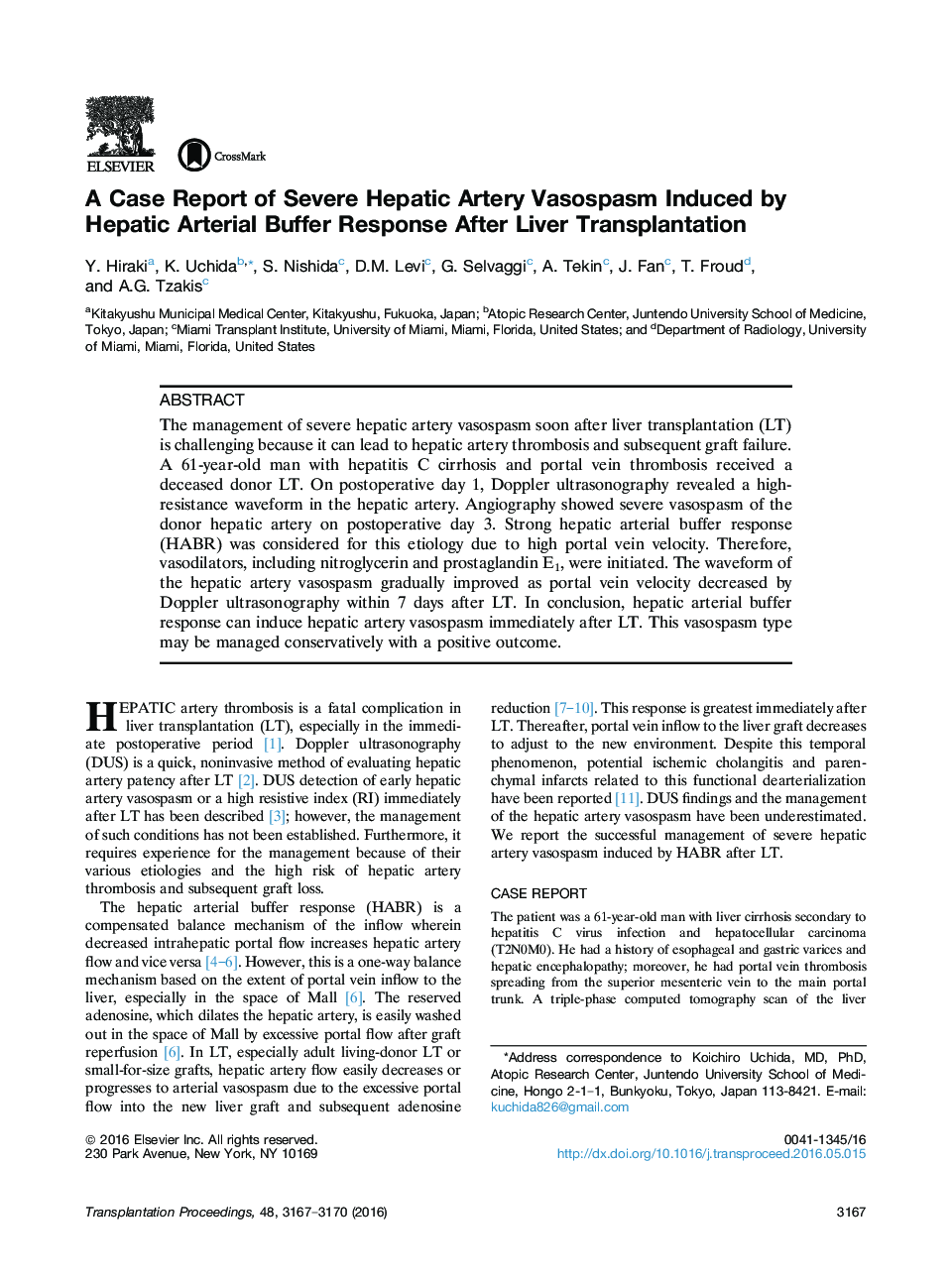| Article ID | Journal | Published Year | Pages | File Type |
|---|---|---|---|---|
| 5729058 | Transplantation Proceedings | 2016 | 4 Pages |
â¢The hepatic arterial buffer response can induce hepatic artery vasospasm immediately after liver transplantation.â¢We report the successful management of severe hepatic artery vasospasm induced by hepatic arterial buffer response after liver transplantation.â¢This vasospasm type may be managed pharmacologically with a positive outcome.
The management of severe hepatic artery vasospasm soon after liver transplantation (LT) is challenging because it can lead to hepatic artery thrombosis and subsequent graft failure. A 61-year-old man with hepatitis C cirrhosis and portal vein thrombosis received a deceased donor LT. On postoperative day 1, Doppler ultrasonography revealed a high-resistance waveform in the hepatic artery. Angiography showed severe vasospasm of the donor hepatic artery on postoperative day 3. Strong hepatic arterial buffer response (HABR) was considered for this etiology due to high portal vein velocity. Therefore, vasodilators, including nitroglycerin and prostaglandin E1, were initiated. The waveform of the hepatic artery vasospasm gradually improved as portal vein velocity decreased by Doppler ultrasonography within 7 days after LT. In conclusion, hepatic arterial buffer response can induce hepatic artery vasospasm immediately after LT. This vasospasm type may be managed conservatively with a positive outcome.
